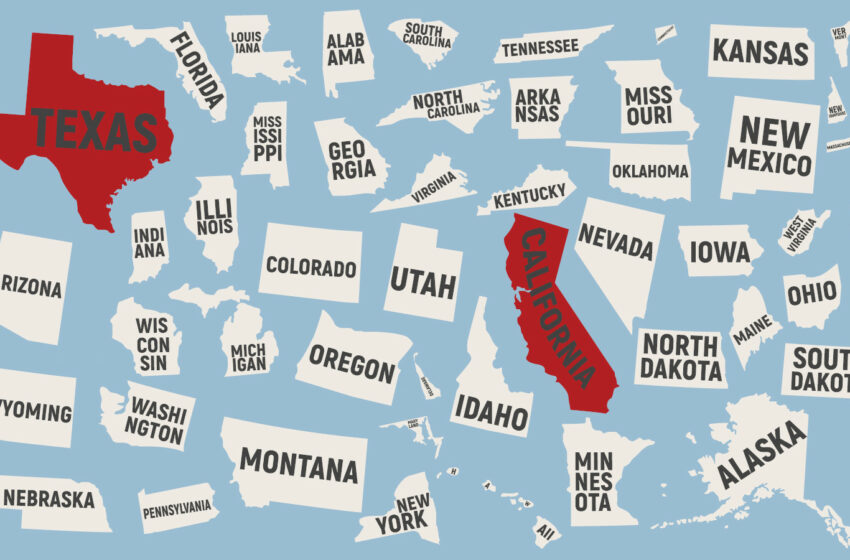The Texas-to-California Pipeline

Why has Texas been such a popular state for Californians—both individuals and companies—choosing to relocate?
US census data shows that more than 687,000 Californians relocated to Texas in the past decade, with 82,235 of them relocating in 2019. These include prominent CEOs likes Elon Musk (Tesla), Drew Houston (Dropbox), and Douglas Merritt (Splunk). Many large technology and other companies have also recently relocated, or announced plans to relocate, from California to Texas, including Hewlett Packard Enterprise, Oracle, 8VC, FileTrail, DZS, QuestionPro, and CBRE, not to mention dozens of others that have significantly increased operational presence in Texas.
The desire to relocate from California to Texas likely has to do with a number of factors—the most obvious being the lower cost of living, the absence of personal income taxes, a robust and growing market for the technology and life sciences sectors, and employer-friendly laws. And with working from home now a permanent option at many of the largest technology companies, these relocations to Texas—even partial ones—are becoming much easier.
Given all these advantages, it’s no surprise that Texas is adding significantly more jobs than larger cities in California. According to a 2021 study by CBRE, Dallas-Fort Worth and Houston rank first and fourth in the list of top 10 metros with the most new jobs in 2019. Dallas-Fort Worth added 127,600 new jobs and Houston added 88,000 new jobs in that time, compared to Los Angeles’ 93,200 new jobs and San Francisco’s 51,300. According to the Dallas Regional Chamber, 102 major corporations are currently exploring relocation or expansion to North Texas, which is approximately a 25 percent increase from the beginning of 2020.
Meanwhile, Austin has increasingly become a tech hub, taking some of that limelight away from the Bay Area. Major market players like Dell, Apple, Microsoft, and Samsung, along with many other technology startups, now have home bases in Austin. In fact, an annual ranking by CompTIA placed the Austin and Dallas-Fort Worth metros first and second in strongest hubs for technology jobs in the US in 2020. Although the Bay Area and San Diego continue to be two of the top three markets for life sciences clusters in the United States, Houston, Austin, and Dallas-Fort Worth rank second, third, and sixth, respectively. California still holds a small lead, but Texas is closing the gap at a rapid rate.
Why one company made the move to Texas
As attorneys at Bell Nunnally, a law firm based in Dallas, we’ve worked with many companies relocating to Texas from California. (We also both got our law degrees in California and now practice in Texas.) One of our clients who made the move is PHP Agency, a national financial services company that relocated to Texas along with its founder and CEO, Patrick Bet-David, five years ago. For Bet-David, no one factor drove the decision to move, but he says “there were several high-impact factors, such as Texas having business-friendly state and local governments and no personal income tax.”
Bet-David cites several other benefits that drew PHP Agency to the Dallas area, including its affordable housing, its diverse labor market, and two exceptional airports that serve almost any city in the continental US in under four hours. “Being centrally located for a growing national company is critical for service and communication with its customers and employees,” says Bet-David.
How regulations are motivating business to leave California
As we’ve seen, Texas’ excellent business environment includes low taxes, a talent-rich employment pool, access to mass transit and distribution centers, and affordable cost of living. But business-friendly local and state authorities and a stable regulatory environment also play a key role in drawing people from California, where matters are quite different.
High corporate and personal income taxes may lead the way in motivating companies to leave California, but the state’s ballot proposition system presents significant issues for companies. The system regularly produces legislation that restricts businesses’ ability to function the way they would prefer. Everything takes longer and costs more money. Assembly Bill 5, for example, directed at companies like Lyft and Uber, reclassified many gig workers as full-time employees. The bill resulted in tremendous opposition and ultimately resulted in a counter, Proposition 22, passed in November 2020, which again reclassified these workers. This volatility is not good for businesses seeking predictable legislative environments, and may be a reason Uber is now expanding its operations in Dallas. Bills dictating board composition also show the narrow and specific changes that can occur at any time given the low percentage required to present and pass an initiative in California.
Businesses have been vocal about California’s proposition system as a key factor in their relocation out of the state. Bringing an initiative to vote requires the signatures of 5 percent of the number of voters in the most recent gubernatorial race. In 2020, there were 17 initiatives with contributions in excess of $700 million to support various sides of the initiatives. These proposals ranged from scientific research to a very controversial initiative that would greatly increase taxes on commercial property. The ability of so few to affect so many cannot be a positive platform for California’s businesses and an ability to develop and execute a business strategy. PHP monitored several propositions carefully, specifically because PHP has more than 100 employees and contracts with more than 18,000 independent contractors across the country. Bet-David notes that “the stability of Texas law regarding independent contractors was an important consideration when we decided to move from California.”
California law and Texas law vary greatly regarding the ability of employers and employees to contract with each other, including differences in the enforceability of restrictive covenants, rules related to worker classification, and requirements for board composition. It’s yet another factor that influences many companies to relocate to Texas. Here are a few differences to keep in mind.
Restrictive Covenants
Certain restrictive covenants, such as employee non-competition provisions, are generally enforceable in Texas (so long as certain requirements are satisfied, such as being ancillary to an otherwise enforceable agreement and containing reasonable limits as to time, geography and restricted activity), whereas they are generally unenforceable in California except in narrow circumstances (e.g., in connection with mergers or acquisitions). Moreover, California limits the enforceability of “choice of law” provisions (provisions that identify a specific state’s law as governing the restrictive covenants) and venue-selection provisions (provisions that determine where a suit may be filed). Venue provisions outside of California for a California employee are prohibited unless the employee was represented by counsel during negotiation of the agreement.
Worker Classification
Worker classification rules also differ between California and Texas. Classification determines how workers are paid, what legal protections they have, what benefits they are owed (e.g., unemployment, worker’s compensation, overtime), and what portion of their payroll taxes, social security contribution, and Medicare the employer is required to pay. California has shifted to the “ABC test” for determining whether a worker is a full-time employee or independent contractor. The test presumes a worker is an employee unless the employer proves otherwise based upon a three-prong test. They must prove that the worker is:
- free from the control and direction of the employer,
- performing work outside of the usual course of the employer’s business, and
- customarily engaged as an independent contractor in such worker’s field.
Texas follows the “common law test,” which classifies a worker as an employee if the employer has control over how a worker completes tasks (behavioral control), or control over a worker’s finances (such as providing facilities or equipment for the work) or if the relationship seems like an employer-employee relationship (such as benefits being provided; considerations include whether the worker’s business is out of the usual course of the employer’s business).
Board Composition
California and Texas also have different requirements regarding the composition of boards of directors. Publicly traded companies domiciled or headquartered in California were required to have at least one woman on their board of directors by the end of 2019 (with such number increasing in 2021 depending on the size of the board) and to have at least one director from an underrepresented community by the end of 2021 (with such number increasing in future years depending on the size of the board). Texas has no such requirements.
The exodus from California is continuing at a growing rate, and the fundamental reasons are unlikely to change in the future. Texas will remain a top destination. Reflecting on his company’s five years in Texas so far, Bet-David says it was “a great decision, and we haven’t regretted the move one bit.”
If Texas is your business’s new home, what steps should you take for a smooth transition?
First, contact an attorney located in Texas, and specifically in the area you have chosen, to help you navigate the regulatory and procedural obligations required by local and state authorities. If your company’s state of formation is elsewhere, it’s important to immediately register as a foreign entity in Texas.
Second, begin submitting annual franchise tax returns to the Texas Comptroller. While Texas does not have corporate income taxes, the franchise tax is a unique aspect of Texas law that requires payment to the state when a company’s revenue exceeds a minimum threshold. Many small companies are not required to pay Texas franchise taxes, but everyone must file a report yearly.





